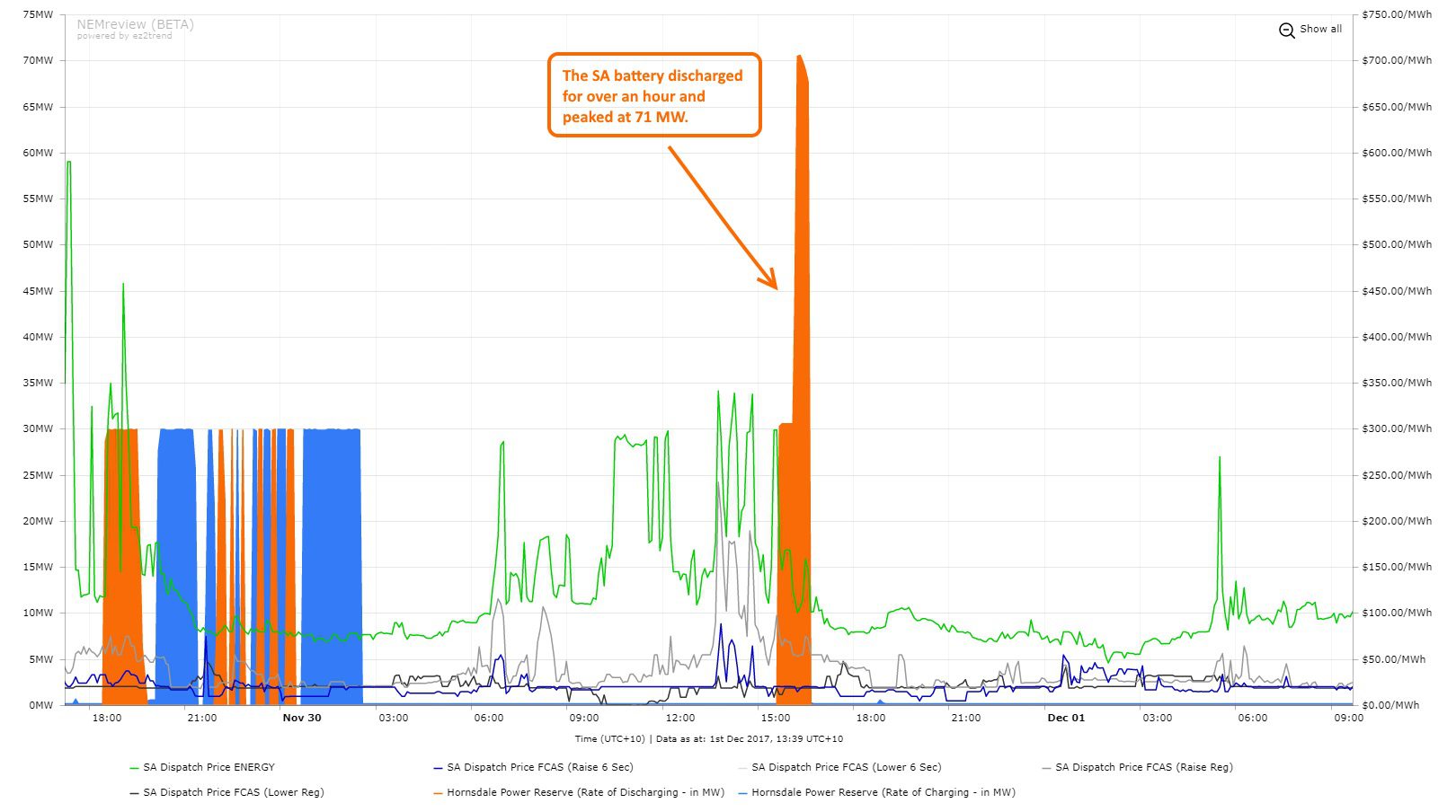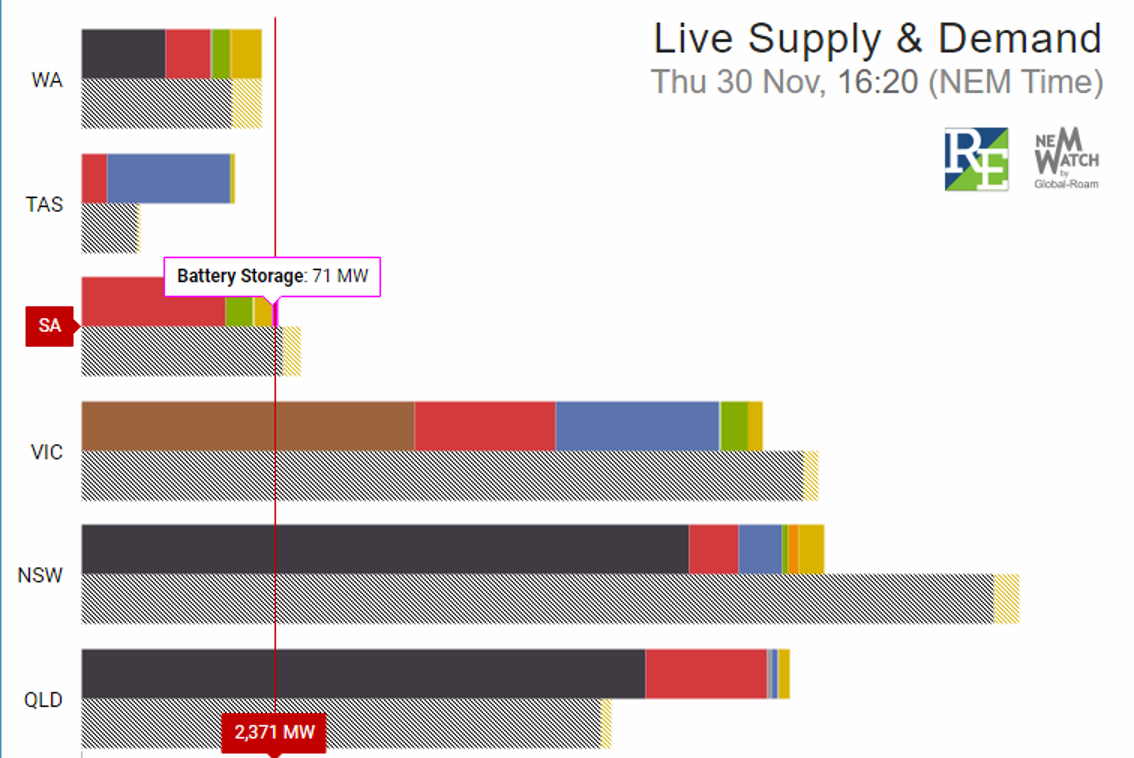As discussed in an earlier WattClarity post the Tesla’s (and Neoen’s) “world biggest battery” commenced testing this last week ready for the 1st December 2017 deadline.
The extent of the battery activity can be seen in this trend from NEMreview v7. As well as some earlier activity, the battery discharged for an hour on the 30th November between 15:30 – 16:30 NEM time with a peak rate of 71 MW.
For those (with the appropriate licence) you can view an updated trend of the above here:
1) In NEMreview v7 , simply click here and your browser will launch with an updated view of the chart above. You can start from there and configure however you like.
2) For ez2view users, it’s a different link so click here and your browser will similarly launch – with the widget being launched having differences of updating in real time, and including predispatch pricing.
A real time view of the battery was captured on the NEM-Watch widget, sponsored by RenewEconomy:
The latest version of the NEM-Watch widget is only available on the on the NEMwatch portal as we are still finalising the development. Feedback on the widget is always appreciated (thanks to those who have taken the time to contact us).




So presumably the zero output last sunday through to tuesday selecting HDWF2 only in SA was due to battery hookup/testing?
http://anero.id/energy/wind-energy/2017/november
Please simply explain how the purpose of Big-Battery in ultra-short-term load demand, frequency and voltage-stability.
How even if you were designing a co-gen i.e gas-coal super-critical plant that you would add battery load-equalisation
Well before I wanted to tackle the Everest of electrochemical storage I’d want to prepare for any obstacles like cobalt cliffs-
https://notalotofpeopleknowthat.wordpress.com/2017/11/25/the-cobalt-cliff/
and as one astute commenter summarised it most succinctly-
“I will take the liberty of saying what I think the poster is getting at.
1. That there are solutions available to those Tesla battery design issues mentioned in the article, but the known solutions will kill Tesla’s range claim.
2. That there are three considerations when talking about batteries for E.V. (electric vehicle) designs. Range, charge time and battery life. The most effective solution for one of these considerations negatively impacts at least one of the other two.
3. That there are solutions readily available that solve any one of the three. Any potential method of solving two of them at once is very difficult and definitely not readily available. There is no solution available to solve all three considerations at once that have even reached the stage of a successful test of the theory in a laboratory. Which needless to say leaves a multitude of real world conditions that aren’t even subject to conjecture yet.
4. Unstated in his post is the oncoming calamity which is the underlying goal of some countries to have every single lawn mower, tractor, car, truck, emergency response vehicle, industrial equipment etc replaced by e.v. in the next twenty years. A goal enforced by law in the hope that a solution for some fundamental battery problems will be solved in the next couple of years when the rollout of the conversion will have to start.”
Whether or not Mr Musk will be around to lead this assault on Everest some are beginning to raise the question of his preparedness and sponsorship-
https://www.msn.com/en-au/motoring/news/comment-tesla-roadster-launch-is-an-illusion-nothing-more/ar-BBFZ4FE